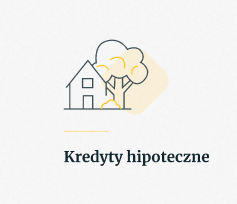Profil
Ocena
| Średnia |
     
|
6,00 |
| Jakość |
     
|
6,00 |
| Obsługa |
     
|
6,00 |
| Cena |
     
|
6,00 |
| Lokalizacja |
     
|
6,00 |
| Gwarancja |
     
|
6,00 |
Pokaż szczegóły ![]()
Ukryj szczegóły ![]()
-
- Produkty (0)
- Usługi
- Promocje (0)
-
- Wydarzenia (0)
- Zlecenia/Przetargi (0)
- O nas
- Załączniki
- Kontakt

Błąd! Niektóre pola są niepoprawnie wypełnione. Szczegóły są opisane poniżej.

Błąd! Niektóre pola są niepoprawnie wypełnione. Szczegóły są opisane poniżej.
Record gold prices in Poland. Much of the credit goes to the weak zloty
As noted by Rzeczpospolita, the economic crisis is increasing Poles' interest in the precious metals market. Demand for gold increased markedly in March and April. \ N An Trojan ounce (31.3 g) of gold is already valued at almost 7.3 thousand. zlotys, i.e. at historically high levels. \ "This is the effect of a weak zloty and exchange rate differences " - reports \ "Rzeczpospolita ". There is no historical record in dollar terms, where you have to pay over 1.7 thousand per ounce. USD - however, is the most since 2012. Experts say that gold is a collateral for years and portfolio diversification. And they add that 10-15 percent assets should be stored in this ore in physical form. \ n- According to many analysts, metals are entering the path of long-term increases. 1.7 cautious forecasts announced 1.7 thous. dollars. at the end of 2020, and the more bold ones said about 2.5 thousand dollars. already in the summer. In turn, Bank of America predicts that gold will reach a historical maximum of 3,000 in 18 months. dollars. per ounce - said Michał Tekliński, director of international markets at Goldenmark, in an interview with Rzeczpospolita. \ n \ nGold for over 1.7 thousand dollars per ounce \ nThe demand side dominated this week's gold market: contracts for this metal have already exceeded 1.7 thousand. dollars per ounce. Buyers are strong, and uncertainty about the situation in the global economy, further fueled by events in the oil market, only increases the chances of further increases in bullion prices. \ N \ nInteresting accent on the gold market was information that in March a record amount of bullion was exported to New York from Switzerland. This showed that not only the demand from India or China can be of great importance in the gold market.

Wall Street rises
The S&P 500 ended marginally lower on Thursday after a report that an experimental antiviral drug for the coronavirus flopped in its first randomized clinical trial, denting optimism that the pandemic’s impact on the labor market was nearing an end.All three main U.S. stock indexes fell back from gains of over 1% after the Financial Times reported that a Chinese trial showed that Gilead Science’s (GILD.O) remdesivir did not improve patients’ condition or reduce the pathogen’s presence in the bloodstream. Gilead said results from the study were inconclusive as it was terminated early. Last Friday, Wall Street rallied in part because of a report that COVID-19 patients in a separate study had responded positively to remdesivir. The market’s sensitivity to news related to coronavirus therapies reflects investors’ desperation for any indication of when the global economy might be able to start returning to normal. “The hope as of last week was that Gilead could take the fear of dying off the table, which would result in a much quicker, cleaner, faster recovery. If that’s less likely today than it was yesterday, it is perfectly reasonable for the market to have sold off,” said David Katz, chief investment officer at Matrix Asset Advisors. Stocks rallied earlier after data that showed weekly U.S. jobless claims fell to 4.43 million from a revised 5.24 million. However, the numbers were still staggering, taking the total in the past five weeks to a record 26 million and wiping out all the jobs created since the financial crisis. “The disappointing drug news stings, but considering another 4 million people lost their jobs, the disconnect between how well stocks have held up in the face of historically bad economic data continues,” said Ryan Detrick, senior market strategist at LPL Financial. Meanwhile, the U.S. Congress was preparing nearly $500 billion more in aid for small businesses and hospitals, which was expected to clear the House of Representatives later in the day. The energy index .SPNY rose 3%, easily leading the 11 S&P 500 sectors as oil prices recovered in a tumultuous week that saw U.S. crude futures crash below zero for the first time in history. [O/R] U.S. stock indexes have rallied this month on a raft of global stimulus, but the benchmark S&P 500 remains more than 15% below its record high as worsening economic indicators foreshadow a deep global recession. A survey showed U.S. business activity plumbed record lows in April, mirroring dire figures from Europe and Asia as strict stay-at-home orders crushed production, supply chains and consumer spending. The CBOE volatility index has retreated from 12-year peaks hit last month, but remains well above levels seen in the past two years and analysts have warned of another sell-off as corporate America issues worrying forecasts for the year. The Dow Jones Industrial Average .DJI rose 0.17% to end at 23,515.26 points, while the S&P 500 .SPX lost 0.05% to finish at 2,797.8. The Nasdaq Composite .IXIC slipped 0.01% to 8,494.75. Las Vegas Sands Corp (LVS.N) jumped 12% after the casino operator predicted a speedy recovery in Asia on pent-up gambling demand. In extended trade, Intel (INTC.O) dropped over 5% after the chipmaker gave a quarterly profit forecast that missed analysts’ estimates. In Thursday’s session, advancing issues outnumbered declining ones on the NYSE by a 1.64-to-1 ratio; on Nasdaq, a 1.50-to-1 ratio favored advancers. The S&P 500 posted six new 52-week highs and one new low; the Nasdaq Composite recorded 36 new highs and 21 new lows. Volume on U.S. exchanges was 11.7 billion shares, compared with a 12.7 billion-share average over the last 20 trading days.

Finance minister: if the epidemic lasts longer, the budget will have to be changed
If the epidemic lasts longer, then the budget will have to be structured quite differently - assessed the head of the Ministry of Finance Tadeusz Kościński quoted in the Monday post on the Ministry of Finance on Twitter. "The budget in force is a balanced budget. We are not in a hurry to amend it," said Kościński quoted in the entry. "If we amend it quickly, we will have less reliable parameters," he explained. "The budget will have to be constructed quite differently if the epidemic lasts longer" - added Kościński.

Anti-crisis shield. Who is the low-interest loan for? How to apply?
The aid package, commonly referred to as the anti-crisis shield, came into force. One of its points are low-interest loans. Who are they for? How to apply? The anti-crisis shield is a support package for Polish enterprises. Support flows to both large companies and small enterprises. Low-interest loans are one of the points. They are intended for micro-entrepreneurs who conducted their business before March 1, 2020, also for those not employing employees. This is a loan for the amount of 5,000. PLN paid once, after signing the contract. The fixed interest rate on the loan amounts to 0.05 of the rediscount rate for bills of exchange accepted by the National Bank of Poland per year. The loan repayment period is 12 months, but it is calculated after a three-month grace period. This deadline may be extended by a regulation of the Council of Ministers, if necessary in connection with the effects caused by the state of epidemic threat or the state of epidemic. In addition, the loan is subject to cancellation at the request of the micro-entrepreneur, provided that he / she runs the business for a period of three months from the date of granting the loan. Anti-crisis shield. How do I apply for a low-interest loan? The application can be submitted using the electronic form on praca.gov.pl or in paper form. To receive a loan, the following documents must be submitted to the city labor office: loan agreement application, public aid form

The leasing industry is reaching out to customers
- Member companies associated in the Polish Leasing Association have undertaken a number of activities consisting in a flexible approach to the customer, including regarding the repayment of his obligations and further implementation of concluded contracts in a crisis situation - explains Andrzej Krzemiński, chairman of the executive committee of the Polish Leasing Association in the conversation that was created as part of the EEC Defense project. We defend the economy together. The pandemic crisis has a negative impact on the economy - consumer moods and the labor market situation, the transport industry and the leasing market. A large proportion of leasing companies' clients apply to their lessors to restructure their repayment schedules, expecting their payments to be suspended for three months. Leasing companies postulate that their clients could conclude or change contracts, e.g. using e-mail. Currently, there is a state of imbalance distorting competition. How has the coronavirus epidemic changed the leasing market in recent weeks? Andrzej Krzemiński, chairman of the executive committee of the Polish Leasing Association: - The crisis situation negatively affects consumer moods and the situation on the labor market, and also influences, among others on the broadly understood transport industry, the leasing market and the entire economy. The leasing industry 2020 started with a slight increase in the dynamics of granted financing at the level of 0.4 percent. year to year for the first two months of this year. The analyzes of the Polish Leasing Association show that this year's result of the leasing sector is below the favorable and still strong trends that persisted in the Polish economy in the first two months of 2020.Market results also indicate a cautious attitude of Polish entrepreneurs towards the slowdown in Euroland. In part, it may result from the first signals of the Covid-19 epidemic. In the second decade of March, a significant part of the economy was closed in practice. - Yes. From the leasing industry's perspective, the road transport sector has suffered the most, mainly in the area of international transport. The low base from last year also impacted the sector's financing of the passenger car and van sector up to 3.5 tonnes. On the other hand, we have seen relatively small declines on the machinery financing market, mainly due to financing via an investment loan. What do customers of leasing companies signal? - A large proportion of leasing companies' clients report to their lessors about restructuring the repayment schedule, expecting suspension of payments for three months. Referring to the most affected industries; customers dealing with tourist services report to leasing companies the cancellation of contracted transport for the coming months. Some of them, despite signing new contracts, are postponing their implementation and collection of buses. Companies from the transport industry - similarly: submit applications for the restructuring of active contracts, and even want to return vehicles used so far. What solutions are introduced by leasing companies in a pandemic? - The goal of our activities in the current economic situation in Poland is to enable customers to conduct business after the epidemic threat has ceased. This means that the activities we conduct are aimed at such treatment of customers who will be in a situation that hinders the ongoing and regular service of contracts to leave at their disposal financed items.

Protection of Polish companies in line with European trends
The protection of Polish companies against takeovers is part of the European mechanisms for fighting for the economy during a pandemic - said Andrzej Kubisiak, deputy director of the Polish Economic Institute. The expert referred in this way to solutions presented on Thursday by Deputy Prime Minister Jadwiga Emilewicz, which are to protect Polish companies against purchase by entities from outside the EU, when due to the epidemic their valuation is particularly low. \ "The solution presented by the Deputy Prime Minister so that such takeover was notified by the Office of Competition and Consumer Protection is part of the European mechanisms of the fight for the protection of domestic economies during a pandemic," - said Kubisiak, He pointed out that nowadays many companies due to the necessity of termination, operations are falling sharply. \ "It cannot be ruled out that there will be speculative capital that will want to take it over from dumped prices," he explained. He emphasized that these companies often have very efficient business models and performed well on the market until the economic freeze. He pointed out that other countries are also undertaking similar protective measures. For example, in Germany the Act on foreign economic relations (Aussenwirtschafstgesetz - AWG) was amended, which significantly limits the takeover of shares of German companies by foreign, mainly Asian companies.Similar actions - he noted - announced the French government. Kubisiak noted that also at the level of the European Commission there are voices about the need to protect European companies, e.g. against Chinese capital. He referred to the deputy head of the European Commission Margrethe Vestager, who in an interview with Financial Times said that nowadays, when many European companies need capital dramatically to maintain liquidity, the risk of being taken over by Chinese capital is very high. Asked whether in his opinion, the modifications introduced today in the mechanisms of European Union action will be permanent, the deputy director of PIE said that "it is difficult to judge about this". He noted that some countries implemented similar measures to protect companies from falling after the financial crisis in 2008. "At that time, the states mainly supported banks, assuming that they were important for the economic cycle," he said. He noted that the option of the so-called rescue shareholding, consisting in the temporary takeover of shares in an enterprise by the state, and then - when the threat is over - sale of these shares. Solutions protecting Polish companies against hostile takeovers are part of the package supplementing the anti-crisis shield, which entered into force on April 1.

Coronawirus and mortgage
The year 2019 brought on the Polish market record mortgage sales results. The number of loans granted amounted to 225,073 and their value – PLN 62.629 billion. In terms of the value of loans granted, last year was the best ever and in terms of the number of loans granted – since 2010, the performance of the first two months of 2020 was also quite good in terms of sales of these products. Figures from the Office for National Statistics (ONS) show that banks lent 38,500 in January and February. mortgage lending at £ 11bn. During the epidemic of mortgage applications, the first week of April (30.03 to 5.04) shows an increase in the number of inquiries by banks about mortgage applicants, according to the Bureau of Statistics. This was an increase of 17.4% from the previous week. Compared to the same period in 2019, the dynamics were negative – queries were down by 7.1%. Interest rate cuts the Monetary Policy Council's second interest rate cut this year also brought a reduction in wibor 3M and WIBOR 6m rates, under which banks set mortgage rates. As of April 1, WIBOR 3M was 1.17% and WIBOR 6m was 1.18%. After two weeks, both rates fell to 0.70% (WIBOR 3m) and 0.72% (WIBOR 6m). This reduction will reduce the amount of the monthly instalment. How much? I will show this on the example of a 300,000 PLN mortgage for 30 years, whose interest rate consists of WIBOR 3m plus a 2% margin. for an interest rate of 3.17% the monthly instalment was PLN 1 292.48, for an interest rate of 2.70% the monthly instalment is PLN 1 216.79. It is worth to add, that in mid-March WIBOR 3M was 1.50%, which translated into an instalment of PLN 1,347.13. Thus, within a month the instalment decreased by more than PLN 130. The rise in mortgage interest rates and the subsequent cut in mortgage rates were good news. If you would like to apply for a mortgage now, be prepared for the bank to demand more from you. Banks are raising their own contribution. These are not – at least for the time being – massive measures, but two banks belonging to the larger mortgage lenders decided to take this step: PKO Bank Polski raised the minimum own contribution to 20%, Pekao Bank Mortgage raised the minimum own contribution to 20%, ING Bank Śląski raised the minimum own contribution to 30%. The environment Bank went a step further – in its case, you cannot borrow more than 60 per cent of the value of a residential property (this means the applicant should have at least 40 per cent of his own money). The Bank adds that decisions related to the level of the contribution sent are made on an ongoing basis and may change depending on the economic situation. The other mortgage-lending banks did not decide to increase their own contribution.

ARiMR: extended recruitment dates from RDP 2014-2020
Applications can be submitted by 17 June 2014 under the sub - measure "support investments in preventive measures aimed at reducing the effects of probable natural disasters, adverse climatic phenomena and disasters" from the RDP 2014-2010" - the agency for agricultural restructuring and modernisation announced in a communication. This aid proposal is aimed at farmers and water companies. Farmers who are rearing or rearing pigs (not less than 50 head) and want to make investments to protect their holdings from the spread of ASF virus can apply for financial support. They can receive up to $ 100,000 for such projects. PLN, the amount of the grant may not exceed 80%. eligible investment costs. Help may be obtained m.in. for the construction of a pig farm fence, the establishment or modernisation of a disinfectant box, the equipping of the farm with a disinfectant device. Aid to be granted under the 'farm modernisation' action may be applied for by a farmer with a holding of at least 1 ha and no more than 300 ha, engaged in an animal or vegetable production activity for a profit, as evidenced by an income of at least 5 000. PLN, recorded in the 12 months preceding the month of application. The applicant must be entered in the national system of producer records, farm records and payment applications. Three categories of investment can be subsidised: improving existing irrigation facilities; enlarging the irrigation area; simultaneously expanding the Irrigation Area and improving existing installations. The financial support per beneficiary and Per holding shall amount to a maximum of 100 000. PLN, with a refund of 50%. costs incurred in implementing the investment (60%) in the case of a young farmer). Due to the outbreak declared in Poland, which has restricted the ability of farmers to handle their cases in person at ARiMR facilities, applications in both recruitment centres can be submitted to the branches in the form of an electronic document to the electronic mailbox; via the ePUAP platform or by traditional mail. Applications can also be delivered to special dispensaries that are set up at the agency's field facilities.

Interest rate cuts and leasing costs
This year, after a five-year hiatus, the Monetary Policy Council has already cut interest rates twice. The first cut took place on March 17, the second on April 8. As a result, the main benchmark rate fell from 1 per cent. up to 0.5 per cent This translated into the WIBOR rate, on which many lease contracts depend. These contracts, or the so-called OWUL (general terms of the lease agreement), provide for how long the lease interest rate changes after the change of WIBOR. This usually occurs after a month or three months. Do this conclusion was reached just by the director of National Treasury information in the individual interpretation of 12 September 2019 (ref. 0111-KDIB1-2.4010.253.2019.1.(ANK). He said the taxpayer could not benefit from the rules in force until the end of 2018 if the amount of lease fees changed as a result of a change in, for example, the WIBOR rate on which they were calculated. The same is true when the payment schedule of individual instalments is shortened or extended. all of this means, according to the director of the KIS, "a significant change in the content of the legal relationship between the parties, which is not separate from the content of the agreement itself". companies, therefore, fear that due to the recent interest rate cuts by the MPC, and in the wake of this and the WIBOR rate cut, they will lose the right to deduct from tax the income of the full lease instalments and will have to consider the 150,000 limit. zł.






Jan Kowalski Financial Advisor ENG >> Jan Kowalski Financial Advisor ENG 2020-04-25